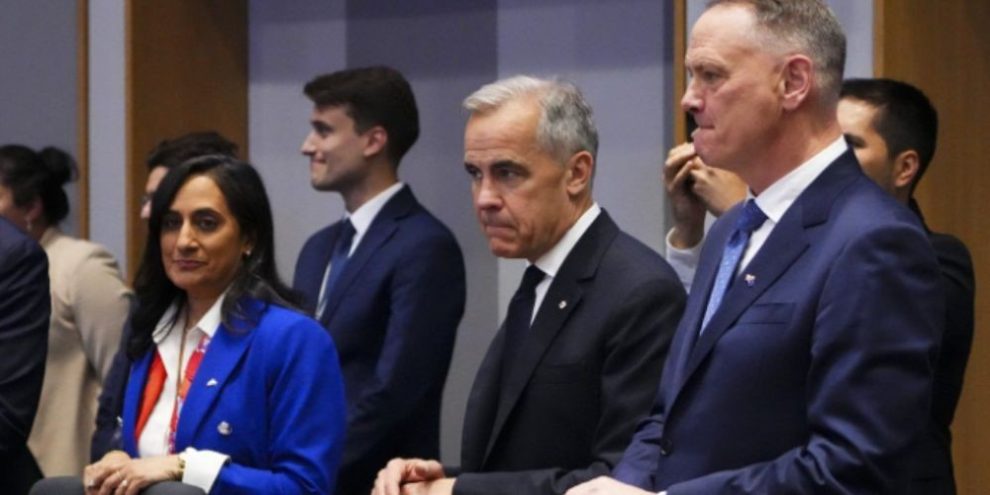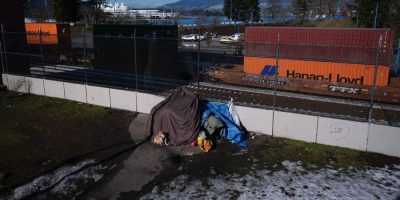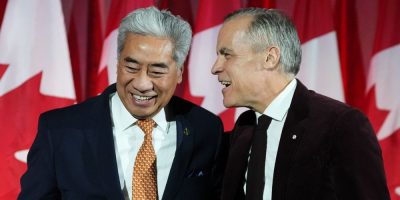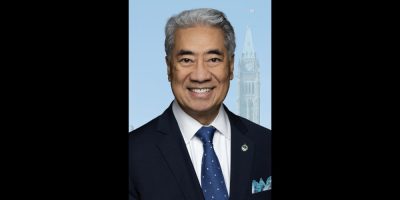
Canada is committed to increasing its defence spending but has questions about the "timeline" for hitting a new, higher NATO spending target, Foreign Affairs Minister Anita Anand said Tuesday.
NATO leaders are expected to decide at the summit in the Netherlands this week whether to raise the spending target from two per cent to five per cent of GDP. When asked if Canada accepts that proposal, Anand said Canada has consistently supported NATO's spending targets.
"The question, really, is the timeline,” she told reporters in The Hague.
She added some allies have proposed a 2029 deadline for meeting the target.
“We’d like to see steps along the way where there can be a re-examination of whether this is the right approach, augmenting at this rate in terms of domestic spend."
Barrie's News Delivered To Your Inbox
By submitting this form, you are consenting to receive marketing emails from: Central Ontario Broadcasting, 431 Huronia Rd, Barrie, Ontario, CA, https://www.cobroadcasting.com. You can revoke your consent to receive emails at any time by using the SafeUnsubscribe® link, found at the bottom of every email. Emails are serviced by Constant Contact
U.S. Secretary of Defence Pete Hegseth and NATO Secretary-General Mark Rutte have both said they expect alliance representatives at the summit to commit to a new five per cent target, up from the current two per cent target set in 2014.
Anand said Canada's new defence and security partnership with the European Union will expand Canada’s defence industrial base.
Asked if she had any concerns about U.S. President Donald Trump’s previous disparaging comments about NATO, Anand said Trump is engaging with NATO in a “meaningful way.”
Earlier this year, Trump suggested that the U.S. might abandon its commitments to the alliance if member countries don’t meet defence spending targets.
Prime Minister Mark Carney and Anand are in the Netherlands for the NATO summit, where allies are set to debate the five per cent target. The main talks in The Hague won't happen until Wednesday.
In The Hague Tuesday morning, Carney met with Edgars Rinkēvičs, president of Latvia, and Dick Schoof, prime minister of the Netherlands. He was also set to meet with leaders of Nordic countries for talks focused on Arctic and transatlantic security later in the day.
The prime minister will also have an audience with King Willem-Alexander and Queen Máxima of the Netherlands.
None of NATO's 32 members spent five per cent of GDP on defence in 2024, according to the alliance's own data. All of them are pledging to meet the two per cent figure this year; Canada is expected to hit the target for the first time since it was established.
A Canadian government official who briefed reporters on background before the trip said the spending target and its timeline are still up for discussion. Some allies have indicated they would prefer a seven-year timeline, while others want a decade to reach the five per cent target.
Canada's defence spending hasn't reached five per cent of GDP since the 1950s. NATO estimates that Canada spent $41 billion in 2024 on defence, or 1.37 per cent of GDP. In 2014, Canada spent $20.1 billion, or 1.01 per cent of GDP, on defence.
In 2014, when the current two per cent target was first set, only three NATO members hit the mark — the U.S., the U.K. and Greece.
Any new spending guidelines have to be made with the consensus of all 32 NATO member states, and no member is currently anywhere close. At 3.38 per cent, U.S. defence spending as a share of GDP was the highest in the alliance in 2024. But President Trump has said the figure shouldn’t apply to the United States — only to its allies.
The plan Rutte is expected to put forward at the summit contains some wiggle room to help allies reach that high figure.
It would commit members to spending 3.5 per cent of annual GDP on core defence needs — like jets and other weapons — and 1.5 per cent on defence-adjacent areas like infrastructure, cybersecurity and industry.
Internal divisions have emerged in the lead-up to the summit.
Spanish Prime Minister Pedro Sánchez said Sunday that Spain reached a deal with NATO to be excluded from the new spending target. Like Canada, Spain has long struggled to meet the two per cent target and has rejected the new proposal.
Rutte warned Monday that no country can opt out of the target and that progress made toward the new target will be reviewed in four years.
NATO’s defence buildup is also controversial in Italy, where defence minister Guido Crosetto said recently the alliance "no longer has a reason to exist."
Defence Minister David McGuinty said "stay tuned" when asked earlier this month if Canada would agree to the five per cent plan.
Jan Techau, a senior fellow with the transatlantic defence and security program at the Center for European Policy Analysis, said the overall level of ambition in Europe on defence has "massively" increased over the last several years in response to Russian aggression.
"The closer to Russia you are, the more ambitious you are," he said.
Lauren Speranza, a fellow at the Center for European Policy Analysis, said the NATO summit is coming at a “very precarious moment,” marked by uncertainty about the U.S. commitment to Europe, the grinding conflict between Russia and Ukraine and ongoing tensions over transatlantic trade.
Speranza said the meeting will offer some insights into how the Trump administration will approach the alliance going forward, following its criticisms of NATO and calls for Europe to take more responsibility for its own defence.
Carney said in a social media post Tuesday that Canada welcomes the announcement of a ceasefire between Israel and Iran.
"With the reported reduction in Iran’s nuclear capacity, we urge parties to adhere to the ceasefire, return to the table and negotiate a diplomatic resolution," he said.
"That resolution should lead to a broader de-escalation of hostilities in the Middle East, including a ceasefire in Gaza."
Tuesday's schedule also includes a reception and a social dinner hosted by the king and queen of the Netherlands.
— With files from Kyle Duggan in Ottawa and The Associated Press
This report by The Canadian Press was first published June 24, 2025.





